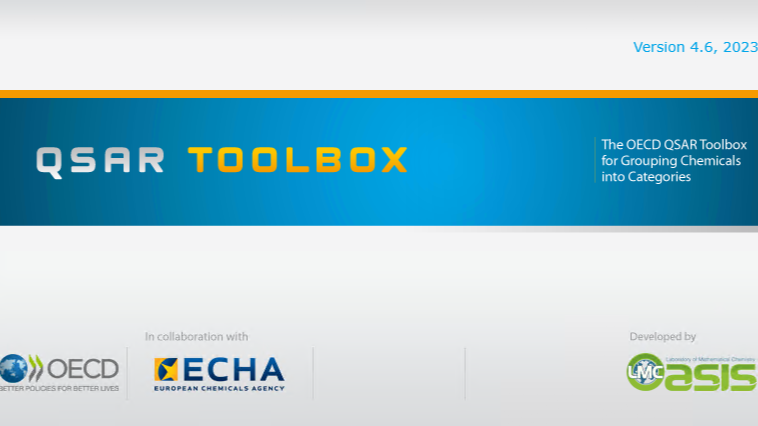QSAR means Quantitative-Structure Activity Relationship and is a computational modeling technique used in chemistry and biology to predict the relationship between the chemical structure of compounds and their biological activity or other properties. It is like a scientific guesswork game where scientists use the shapes and structures of molecules to predict how they will behave in the real world. It’s like looking at puzzle pieces and figuring out how they fit together to make a complete picture. Nowadays, it presents an important scientific and professional tool for understanding how different chemicals might interact with biological systems or the environment.
If you’re unfamiliar with the term “QSAR,” or you would like to know even more, I recommend starting by reading our concise and easy-to-understand blog post on the QSAR topic.
In this blog, let us dive into a more specific but very useful QSAR topic…
What is QSAR Toolbox?
QSAR Toolbox, developed by the European Chemicals Agency (ECHA), is a free software application used for the assessment of the properties and potential risks of chemical substances.
In the field of toxicology, regulatory assessment, and the safety of chemicals, QSAR Toolbox, stands as a pivotal tool. But what exactly is it, how does it work, and why is it so valuable?
QSAR Toolbox helps us understand chemicals better. By analyzing the structures of different chemicals, it predicts how they might behave and interact with living organisms and the environment [1].

Picture source: https://qsartoolbox.org/download/
While creating and adjusting to QSAR models can be quite technical, using QSAR Toolbox doesn’t have to be. The QSAR Toolbox operates by analyzing the structural characteristics of a chemical compound and comparing them to existing data on other chemicals with known properties. This analysis allows the toolbox to make predictions about the chemical’s potential toxicity, ecological impact, and more.
Here is how to use it in a simple way
- Access the Toolbox: You can find QSAR Toolbox online and luckily, there are many versions freely available. Here’s a link: https://qsartoolbox.org/download/
- Enter a chemical: Type in the name or structure of a chemical you are curious about in the ‘’search’’ bar. [2]
- Get insight: The Toolbox will provide you with information about the chemical’s potential risks, like toxicity and environmental impact. [2]

Picture source: https://qsartoolbox.org/features/input/
Here is a link to some of their manuals to download if you would like: https://qsartoolbox.org/support/.
Why do we need QSAR Toolbox?
- Safety first: It helps us ensure that the chemicals in everyday products like cosmetics and cleaning agents are safe for us and the planet. Researchers can use QSAR predictions in the early stages of chemical development to design safer and more environmentally friendly compounds. [3]
- Efficiency and less animal testing: Traditional toxicity testing can be time-consuming, expensive, and may involve animal testing. QSAR models provide a faster and more cost-effective way to make initial assessments. It’s part of the move toward using fewer animals in experiments, promoting ethical practices and with that, QSAR Toolbox contributes to the principles of the 3Rs (Replacement, Reduction, and Refinement). [3, 4]
- Risk Assessment: It helps regulatory bodies and industry professionals evaluate chemicals for potential risks to human health and the environment. QSAR can fill in gaps in toxicity data for chemicals with limited or no experimental data, enabling more comprehensive risk assessments. [3, 5]
How can everyday people use it?
You might not be a chemist, but the QSAR Toolbox is still handy for everyday folks:
- Product choices: Curious about the safety of a new cleaning product or cosmetic? Look up its ingredients in the Toolbox to make informed choices.
- Environmental concerns: Concerned about a chemical’s impact on the environment? Check its profile in the Toolbox to see if it’s eco-friendly.
- Health decisions: Want to know if a chemical in a new product might affect your health? The Toolbox can provide insights to help you decide.
In conclusion, the QSAR Toolbox is more than just a scientific tool; It’s a powerful tool that combines science and technology to enhance chemical safety assessment and a gateway to understanding the chemicals around us. It empowers everyday people to make safer choices for themselves and the environment.
GS tip: The next time you’re curious about a chemical, remember, the QSAR Toolbox is just a click away, ready to unveil its secrets.


0 Comments